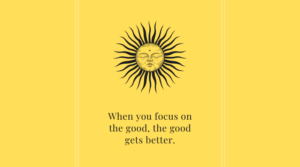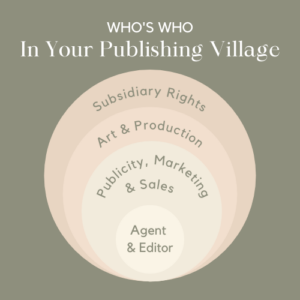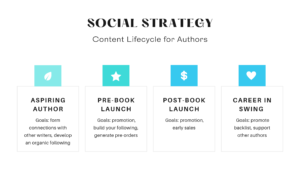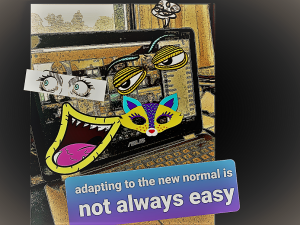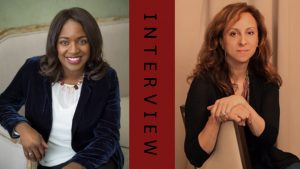Digital
In this strange stay-at-home year, publicity and marketing for authors has been more difficult than ever. It’s not just that physical in-person launches, events, school visits and festivals have had to be cancelled, postponed or streamlined to be shifted online. It’s also harder to get publicity materials into the usual outlets, and social media has also seemed less receptive to the usual kind of book news. Book people generally have had to invent new ways of connecting with readers and spreading the word about new books whilst providing an entertaining and engaging distraction from the general news.
In my case, as I described in a previous post, I’ve been experimenting with different kinds of online presentations, but what I want to discuss is a form of online presentation which I’ve really enjoyed creating. I call it an illustrated video talk for want of a better, more elegant phrase (any suggestions as to that gratefully accepted!). It’s a mix of PowerPoint slides and audio commentary, turned into a simple video which is easy to make and upload to You Tube or other video channels. The primary focus of these videos is not straight-out book promotion per se–though hopefully they will arouse interest in the book or books discussed in the video. Instead, I intend them to be intriguing, informative and maybe even useful–glimpses into my creative process, inspirations and the writing life generally. Thus they would fit within an overall author strategy, rather than just single-book promotion or even multi-book promotion.
The beauty of these illustrated video talks is that you do not need to be a professional video-maker to create them, or to have access to expensive high-quality equipment. Of course you won’t have the ‘live’ feel of the ‘talking head’ video, but you also avoid issues like mediocre web-cam quality, umpteen takes, large file sizes, etc. And in my opinion you get the ‘storytelling voice’ across more strongly, as there’s less to distract you. Don’t expect them to get you lots of ‘hits’ unless you are very lucky, but do expect that you will be creating some very useful and practical resources, not only to put on your sites and social media, but to give out as links to people who might consider booking you for other kinds of presentations, as well as for school visits, for publishers’ marketing, etc. And they are fun to make!
The basics of it are easy: You write a simple script, use Power Point to create the original series of slides based on important pointers in your script, with illustrations, then record your commentary with the Audio function in PowerPoint (you can also add music if you want). After saving the file in PP, export it to an MP4 format, then upload to YouTube, Vimeo, etc.
Of course there’s more to it it you mean to make something that goes beyond a simple ‘hey, look at this book’ notion. So far I’ve made three of these illustrated video talks: one which looks at the inspiration and process behind the creation of several of my picture books; one about the inspirations and sources behind my new retellings of French fairy tales; and one in a great […]
Read MoreLike most professional writers, I’ve always supplemented my writing income with speaking gigs—workshops, talks, presentations of all sorts, both for adults and for children. Although over the years I’ve presented the odd Skype or other remotely-delivered live presentation, the vast majority of my speaking gigs have been face-to-face and in person. They’ve often involved travel of some sort or the other—usually long distance, sometimes close to home.
Since late March, when the shutdown began here in Australia, that’s not been possible. Things are easing now where I live–we can travel now, at least within our State, that’s not the issue—but it still isn’t possible to return to the old speaking-gig model. Schools aren’t keen on having outside visitors, libraries’ hours are still restricted, and adults who usually attend workshops don’t really feel confident yet about the face-to-face experience. Like so many, I’ve had to learn to pivot pretty much exclusively to online presentations, and in the process I’ve learned quite a few things about the differences between online and in person, and how to best adapt a model I’ve evolved over the years I’ve been doing these gigs.
As I mentioned earlier, I’ve done the odd Skype or other online live presentation before, so I wasn’t unfamiliar with the remotely-accessed method of delivery: but all those previous presentations were talks, not workshops. Talks, like conference presentations, don’t need a lot of adaptation to present online—you give your talk, people sit there and listen, and then they ask questions at the end, which are hopefully moderated by whoever is the organizer. You do miss some of the buzz of the in-person audience, the expressions on people’s faces, etc. But it works pretty well, still. Some of the talks I’d given online had been to multiple schools at once, through a Department of Education closed system, and they worked like Zoom does, with muting of microphones etc. I’d be based in one of their studios which enabled the use of an electronic whiteboard, or ‘smartboard’ as it’s known here. The main challenge with those was making sure every school could contribute to question time. The Skype talks I’d given meanwhile had been to individual schools, one at a time, and that was easy because apart from not being in the classroom, it was, well, pretty much the same as being in the classroom 😊
Read MorePhoto: Voltamax-60363
I was on the phone with author Barbara Taylor Bradford on Tuesday morning. We were just having a check-in to see how things were going in quarantine. I complained about my mornings of remote learning with my five and eight-year-old children. We both agreed that as women who have worked from home for years—she 40 and me 15—not much had changed for us in that respect. But having lived through WWII, she wanted me to know that it would be OK, that things would get better, that I had to have hope. She then commented that she was excited for the end of the day because after she completed a writing chapter of her next book, she would be shopping online for some Maybelline makeup. This was her reward for a chapter complete. This was the bright little ray on her day.
It made me smile.
In my last WRITER UNBOXED article, I discussed the positive movements in the book world since the pandemic. I’ve seen many a book launch since then, and as a publicist, I’ve been part of a few. Despite all the good, I’ll admit, there are days I feel less than hopeful.
With limited distribution, cancelled tours, fewer marketing dollars, media shifts and downsizes, and possibly decreased publisher support, many authors with books launching this spring are facing a challenge.
So I queried nine authors who have recently launched or are about to launch a new book. I wanted to know, as an artist, what or who gives them hope each day? And what gives them hope for your book despite this uncertain time.
I have to say, the power of US, is so very strong.
Richard Fifield, The Small Crimes of Tiffany Templeton, March 10
My second book was launched on March 7th. Three days later, the world shut down, and I had no live audience, no venues. I need an audience. On the computer, the camera creates a distance that cannot be closed. Last year, my mother died of leukemia, and I was holding her hand at the end, just the two of us, my laptop open, because I promised her that I would finish this book. She was my best friend, and in the last six weeks, I needed her. Our relationship was stormy, until I got sober in April of 2005. I did the work to make it better, and that work began with learning how to love selflessly, to find perspective. Fifteen years ago, I began walking the dogs at Animal Control, the worst dogs, the ones considered unadoptable, damaged beyond repair. I could identify with that. They were so grateful to see me, the real me, and it broke my heart that they had no idea they were set to be euthanized. I was spared, by the grace of something bigger than me, stopped from euthanizing myself slowly. I have adopted five of those dogs, learned to grieve without numbing myself, learned to love without the fear of loss. My rescue dogs rescued me, showed me how to love, and how to be loved. In the last six weeks, they remind me I’m fortunate to have published a book, no […]
Read More‘Reinventing You’
On December 4, Don Maass’ first of a planned three columns on this year’s Writer Unboxed Un-Con helped me sort out one of the more interesting tensions I’ve seen growing this year in the writing community at its broadest. It involves risk, going wide, and who does it.
I’m using tension here in its safer connotation(s), as in a helpful tautness that keeps a tightrope walker from falling, or, as one dictionary treatment has it, “inner unrest, striving, or imbalance.” Years’ ends are good moments to assess tensions of many kinds, because the psychological transfer of one year to another itself vibrates with tension, energy–captured at best and lashing around at worst.
That old phrase “to catch the tenor of the times” today makes more sense as “to catch the tension of the times.”
Don writes, “Every manuscript holds back in some way,” and he goes on to list ways that a work’s own dynamics can defeat itself, including “Characters who only go so deep”–which I originally read as “characters who only go to sleep,” ironically–as well as “outcomes never really in doubt” and “voices that could be anyone’s.”
He goes on to describe a capacity for “reinventing you,” which can create a “sense of wonder we feel in reading [something that] springs from what is personal to you in writing.” And he captures the value of being terrified. “Terrified is exactly how you want to be. When you’re terrified, you’re not playing it safe.”
I realized where I’d seen this first: tennis. In 2012, the Czech tennis player Lukáš Rosol defeated Rafael Nadal in the second round at Wimbledon. The tennis world was aghast. Rosol was a virtual unknown, a kid. He’d blasted into view on a grass court and he’d taken down the No. 2 player in the world at one of the highest peaks of the sport, the All England Club.
In ensuing years, the incident would be repeated with more recognition. Every now and then, a player–usually young, usually far down in the world rankings–will take out a star of the pantheon in an early match at a big tournament. It happens with enough frequency that wary eyes look at early draws now to see where these moments might occur.
And at one point, Serena Williams articulated exactly what’s happening. The more mature, vaunted players–herself included–can be blindsided by such an opponent, she said, because the comparative newcomer has nothing to lose. Just to get onto one of the great courts of the tournament year with one of the legends of the game is such a break that a player in this position will risk everything. While the more seasoned champion is pacing her- or himself for the incredible strain of a two-week tournament, the “out of nowhere” player will spend every ounce of strength he or she has to win this potentially career-igniting match.
And this year’s writerly observers are seeing something that carries a rough parallel to this. It’s my provocation for you today.
Read More
